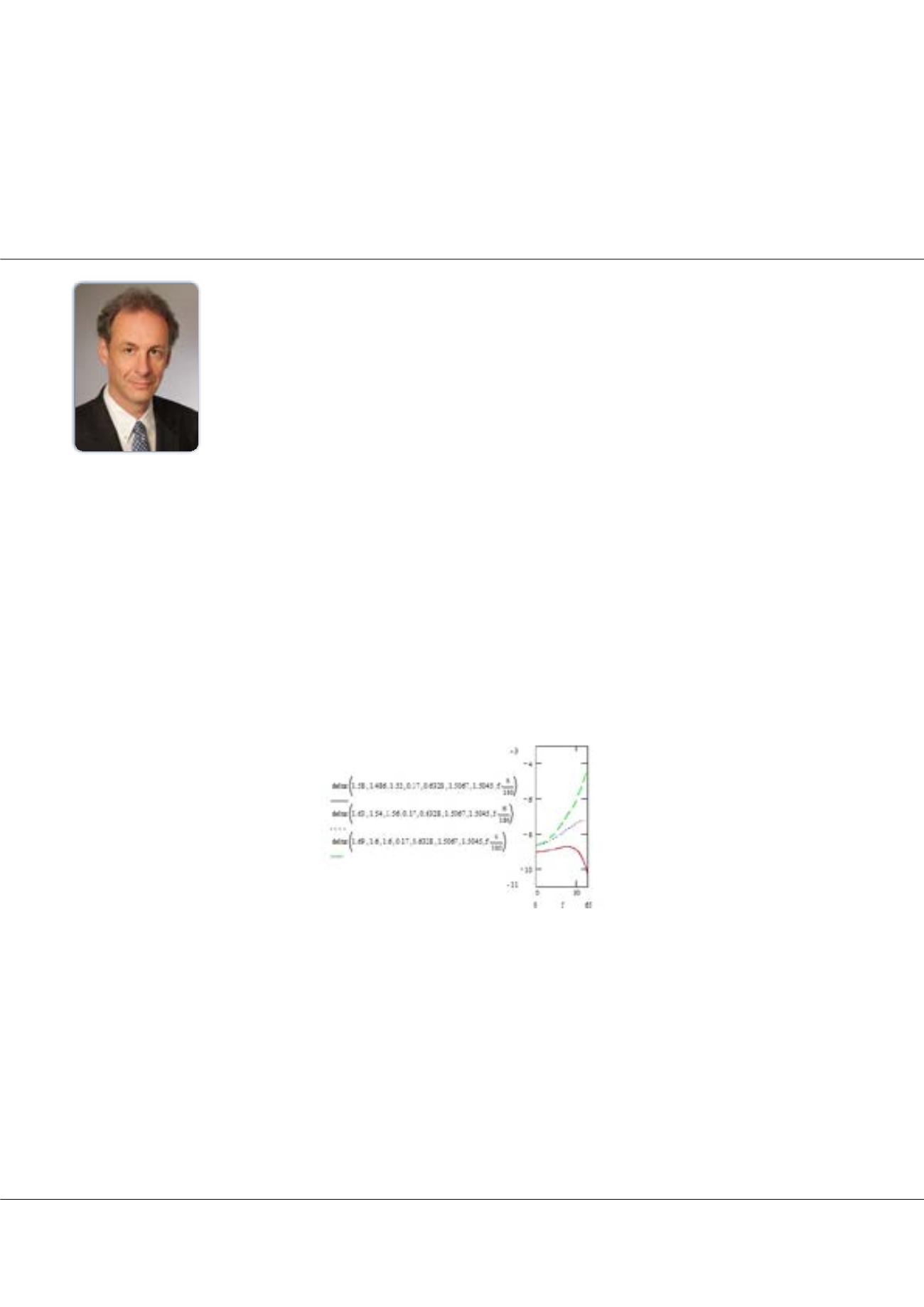

Volume 4, Issue 2 (Suppl)
J Laser Opt Photonics, an open access journal
ISSN: 2469-410X
Page 27
conference
series
.com
JOINT EVENT
July 31- August 02, 2017 Milan, Italy
&
6
th
International Conference on Photonics
7
th
International Conference on Laser Optics
Twisted and turned layers – no problem for ITE (Immersion Transmission Ellipsometry)
I
f looking at optically thin layers or thin films with an anisotropic structure, the main applications of such films are in display
technology. There are different ways, such layers can be used: as polarisers, if absorbing, as retarders, if transparent, as photo-
alignment films, if very thin and with a specific surface, that can be used to align other attaching films during an annealing step
in fabrication. Of course, the optical properties of the resulting display depend on the quality of the layers used to produce it.
Therefore, we developed a new method, which can very accurately determine the three-dimensional refractive index and its
orientation in a thin layer. Even films, whose properties vary in the direction perpendicular to the film plane, can be studied
with success. We employed a combination of transmission in two different media - immersion transmission ellipsometry and
reflection ellipsometry at one single wavelength. Ellipsometry is the measurement of the alteration of the polarization state of
light transmitted or reflected by the layer or film studied. The accuracy of the method was very high compared to conventional
reflection ellipsometry in only one medium. If compared to combined transmission and reflection measurements in air, we
also reached a drastic improvement. The method of immersion transmission ellipsometry is a significant step forward in the
development of non-destructive optical characterization methods for thin films with complex anisotropic structure.
Figure1:
Three normally indistinguishable sets of data can be expanded by immersion transmission ellipsometry.
Depicted is the ellipsometric parameter Δmeasured in transmission under immersion. The first 3 figures are the
refractive indices of the film. Then wavelength in µm, and immersion and substrate index follow.
Biography
Carl C Jung has his expertise in finding mathematical models for engineering, physical and physical chemistry questions and implementing them in evaluation and sim-
ulation software. His way led from amperometric biosensors (Cambridge University, UK), via biophysics employing florescence (Max Planck Institute, Frankfurt a M) to
display technology and ellipsometry (IDM, Berlin and Potsdam). Here the presented topic was generated. Thereafter he returned to biophysics and fluorescence (Bayreuth
University), and after one year in research management (Fraunhofer, Munich) he finally performed theoretical and experimental studies on the heating of bond wires used
in integrated circuits by electronic engineers (Robert Bosch Center for Power Electronics, Reutlingen).
c.christoph.jung@t-online.deCarl C Jung
CCJ Software, Germany
Carl C Jung, J Laser Opt Photonics 2017, 4:2(Suppl)
DOI: 10.4172/2469-410X-C1-010
















